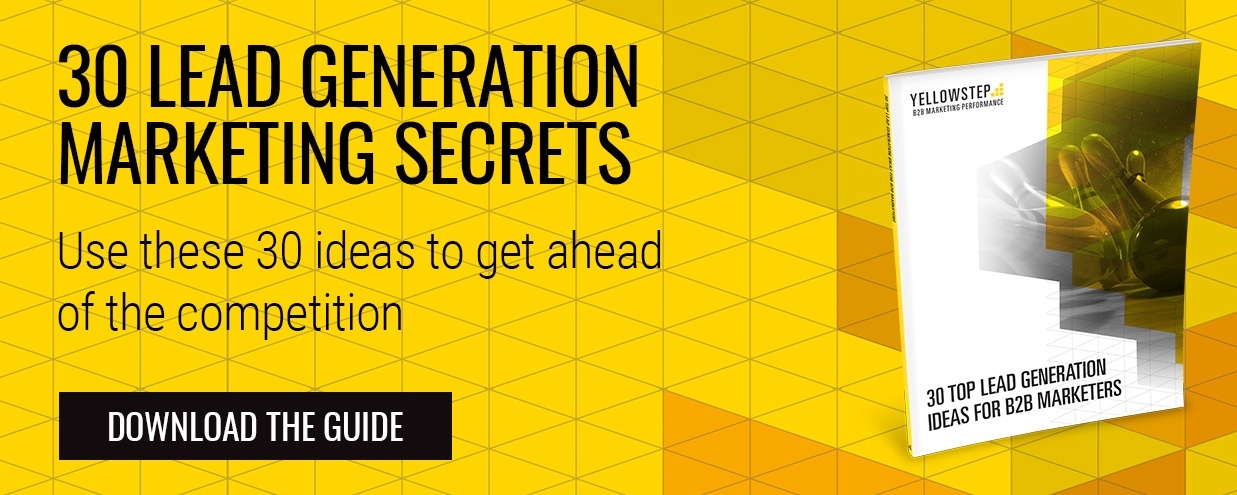How effective is your digital marketing? It's a simple question that many marketers simply can't answer. Or should I say few can answer it in any meaningful sense.
Sure, we can be told that the last email campaign had a 19% open-rate and the current homepage bounce rate is just 14%, but how many leads and sales has this generated? These are the real stats that matter and this blog will tell you exactly why so many marketers just aren't reporting on it well.
Blinded by statistics
One of the beautiful things about digital marketing is that is allows you a great deal of insight into your marketing activity. You can track everything from unsubscription rates to impressions, click-through rates to screen resolution and all of this data makes us feel empowered as marketers.
Simply having access to data doesn't make us better marketers though. Understanding what data points are relevant is increasingly becoming a key differentiator between marketers. Having a page one ranking on Google might sound great when your SEO consultant informs of it but how are they accounting for the filter bubble? When your PPC agency's monthly report tells you that you spent £1500 on your top keywords and your visitors spend an average of three minutes on your site, what does this actually tell you? Not a great deal.
There is too much time being spent on irrelevent data points. In fact, the approach is often all too isolated. It's...
All too tactical
Disjointed. Siloed. Compartmentalised. Call it what you will, the point is there isn't enough joined up thinking when it comes to digital marketing. SEO is not a digital marketing strategy. SEO is a methodology for getting found within search engines, nothing more than that. Once a site is found, then what?
Too much emphasis is given to the tactical aspects of digital marketing without anything like enough focus being given to the holistic approach. This is one of the reasons we became a HubSpot certifed partner agency, because it unifies your digital marketing so that everything is neatly connected, providing you with a complete overview of all of your digital marketing efforts within one dashboard.
Striving for the immediate sale
Everything has its place. This is as true of your household clutter as it is to digital marketing tactics. SEO, as noted earlier, has its place within a digital marketing strategy. Its place is in driving traffic to the website and that's great when you're number one for the query "Buy XYZ widget online" but what about those customers who aren't ready to buy or don't even know they have a problem that your company can solve?
Our marketing efforts should focus on capturing the attention of our potential customers as early in the buying cycle as possible, not just at the very end as they are about to click add to cart. By understanding the challenges our customers are trying to solve and presenting them with solutions, we are able to build trust over time so that come purchasing time, it's your sales team that they turn to.
Lots of content, not enough context
The content marketing institute found that 91% of B2B marketers are engaged in content marketing (admittedly that's like the dairy farmers association reporting 95% of farmers milk cows) so with this much content coursing through the internet, website visitors and customers have become highly adept at filtering the wheat from the chaff.
Your content marketing goals should over the last twelve months have shifted somewhat, especially in light of Google's Hummingbird update. High quality content wins over high volume of content. In fact, any marketer engaged in content spinning was always going to hit troubled waters sooner or later because they weren't focusing on the right things. The right things in this instance being the needs of the customer/user.
The most sustainable content marketing uses contextualised content. Content that matches the needs of the of the user at whatever stage in the buying cycle they are at is going to give you a longer term pay off and will mean that no matter what algorithm changes Google makes, the content remains relevent and penalty free.
Lacks a strategic approach
The strategy need not be a 50 page document with a 1500 word executive summary. You just need to know what the organisational goals are, which channels you want to use and at what stage each tactic will be deployed. Admittedly, that is the most stripped-back, bare bones approach to a strategy ever conceived but it's gets the point across.
At Katapult we follow the inbound methodology that allows us to implement a clear, cohesive digital marketing strategy: Get found, engage, convert & analyse. Everything has its place as demonstrated below.
Get Found: Blogging, SEO, social media, email subscribers
Engage: Landing pages, Calls-to-action, premium content, smart CTAs
Convert: Marketing automation, lead nurturing, email marketing, smart lists, workflows
Analyse: Analytics, CRM, closed-loop reporting.
 By
By 